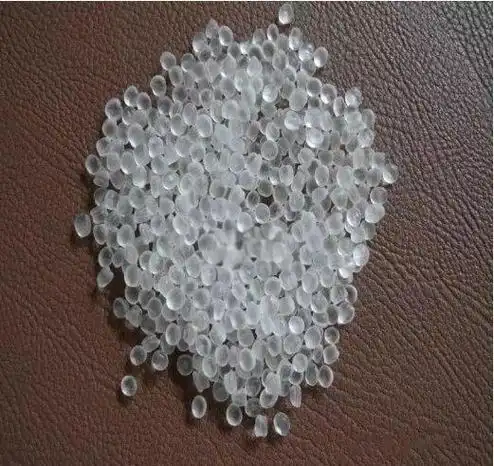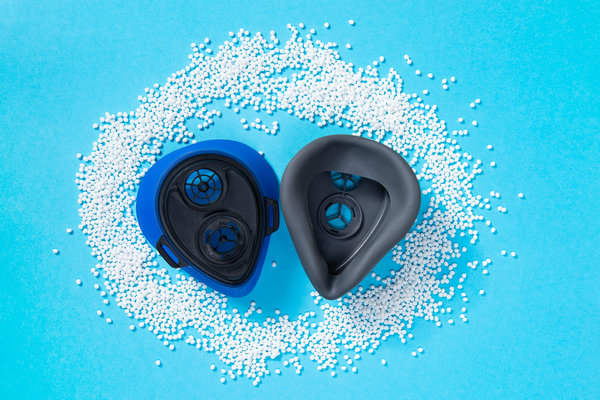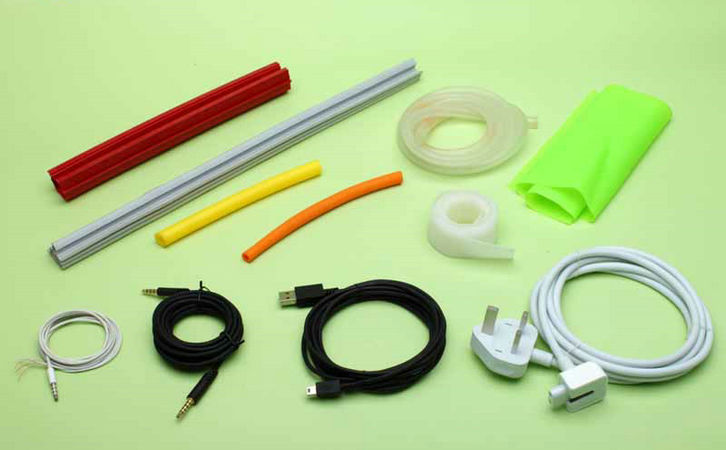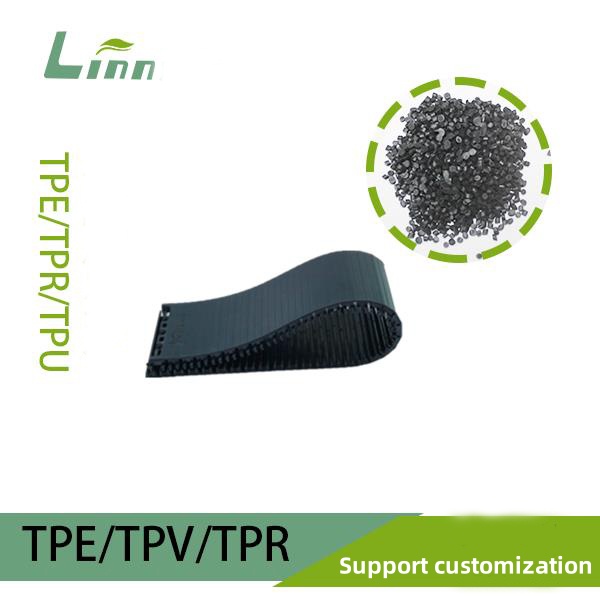As someone who has spent over two decades in the thermoplastic elastomer industry, starting from hands-on compounding in small-scale labs to leading formulation teams for global manufacturers, I have seen countless batches of TPE turn from promising prototypes into frustrating, tacky failures. My journey began in a factory floor in the early 2000s, troubleshooting why soft-grip handles for power tools were shedding residue after just weeks of use. Today, as a consultant optimizing production lines for automotive and consumer goods sectors, I blend that practical grit with a deep dive into material science. What follows is not just theory, but battle-tested insights drawn from analyzing thousands of samples under SEM microscopes, tweaking rheometers for flow behavior, and collaborating with suppliers to refine grades that withstand real-world abuse. If you are dealing with sticky TPE surfaces, you are not alone, and this guide will equip you with the knowledge to diagnose, mitigate, and prevent it effectively.
Thermoplastic elastomers like TPE sit at the fascinating intersection of rubber’s flexibility and plastic’s processability. They are block copolymers, typically built around a backbone of styrenic blocks (the hard segments providing strength) and olefinic or polyether segments (the soft ones delivering elasticity). This duality makes TPE ideal for applications ranging from medical tubing to phone cases, but it also introduces vulnerabilities. Stickiness on the surface manifests as a tacky, oily feel that attracts dust, compromises grip, and signals underlying issues in formulation, processing, or environmental exposure. Users searching for answers often arrive here after pulling a fresh-molded part off the line only to find it clings unpleasantly to their fingers, or after months of storage where a once-smooth component now feels like it has been coated in residue.

In my experience, this problem disrupts production yields by up to 15 percent in high-volume runs, especially for low-durometer grades under 40 Shore A. It is not merely cosmetic; unchecked stickiness can lead to part failures in assembly lines or user dissatisfaction in end products. By breaking down the root causes, we can map a path to solutions that enhance durability without sacrificing the soft-touch appeal that makes TPE so valuable.
Understanding the Core Composition of TPE and Why It Prone to Surface Tackiness
To grasp why TPE surfaces turn sticky, we must first unpack its molecular architecture. TPE is not a single polymer but a dynamic blend: the base resin, often SEBS (styrene-ethylene-butylene-styrene) or SBS (styrene-butadiene-styrene), forms the skeleton. SEBS, being hydrogenated SBS, excels in weather resistance and oil compatibility, making it the go-to for 70 percent of commercial TPE formulations. SBS, cheaper and more flexible, dominates in budget applications but trades off with higher tackiness risks.
Enter the plasticizers: paraffinic or naphthenic oils that constitute 20 to 50 percent by weight in soft formulations. These oils swell the elastomeric mid-blocks, lowering the glass transition temperature for that rubbery hand-feel. Fillers like calcium carbonate or talc add opacity and stiffness, while stabilizers (antioxidants like Irganox 1010) fend off oxidation. Compatibilizers, such as maleic anhydride-grafted polyolefins, ensure the phases do not separate during extrusion.
Here is where trouble brews. The oils, while essential for flexibility, are low-molecular-weight migrants. In a stable TPE, they remain dispersed within the polymer matrix, locked by the SEBS’s absorptive polystyrene domains. But under stress, they bloom to the surface, creating a lubricious film that feels sticky. Imagine the matrix as a sponge: overfilled, and the liquid seeps out. Low-hardness TPEs (below 30 Shore A) pack in more oil, amplifying this effect. I recall a client producing baby teething toys; their initial SBS-based blend at 25 Shore A oozed oil after 48 hours at 40 degrees Celsius, forcing a reformulation that hiked costs by 12 percent but saved the product line.
Environmental factors accelerate this. Heat softens the matrix, allowing diffusion; UV light cleaves polymer chains, releasing trapped additives; humidity swells the soft segments, diluting surface tension. Hand oils from users exacerbate it, as natural sebum reacts with the migrated plasticizer, forming a gummy ester layer. In one forensic analysis I conducted for a sports equipment maker, FTIR spectroscopy revealed that 80 percent of the tackiness stemmed from oleic acid migration interacting with surface oils, turning a grip tape prototype into a dust magnet after field testing.
Primary Causes of Surface Stickiness in TPE: A Detailed Breakdown
Drawing from years of root-cause analyses, I categorize stickiness triggers into formulation flaws, processing pitfalls, and post-production exposures. Each deserves scrutiny, as isolated fixes often fail without holistic intervention.
Formulation-Related Causes: The Recipe for Residue
At the heart of many sticky failures lies the bill of materials. Excess plasticizer content tops the list. For every 10 percent increase in oil loading beyond optimal (typically 25-35 percent for 50 Shore A grades), surface tack rises exponentially. In SEBS-based TPE, the butylene mid-block absorbs up to 400 percent its weight in oil without blooming; SBS caps at 300 percent, explaining why SBS formulations stick more readily. A table summarizing oil impacts across hardness levels illustrates this:
| Hardness (Shore A) | Typical Oil Content (%) | Stickiness Risk Level | Example Application |
|---|---|---|---|
| 0-20 | 40-50 | High | Soft seals, grips |
| 30-50 | 30-40 | Medium | Consumer handles |
| 60-80 | 20-30 | Low | Automotive seals |
Base polymer choice matters profoundly. SBS’s unsaturated butadiene segments oxidize faster, generating polar groups that enhance surface energy and adhesion. SEBS, saturated and stable, resists this, but even it falters in ultra-soft variants. Additives compound the issue: overzealous slip agents like erucamide (0.5-1 percent) prevent mold release but precipitate as a waxy film if incompatible. In a 2015 project for a toy manufacturer, we swapped erucamide for a silane-treated silica at 2 percent, slashing tack complaints by 60 percent while maintaining lubricity.
Stabilizer imbalances also play a role. Insufficient hindered phenols allow chain scission, freeing oil pockets; excess leads to blooming. My rule of thumb: aim for 0.2-0.5 percent total antioxidants, verified via DSC thermal scans to ensure melt stability above 180 degrees Celsius.

Processing-Induced Stickiness: Heat, Shear, and Flow Dynamics
Injection molding or extrusion, the lifeblood of TPE production, can induce tack if parameters drift. Elevated barrel temperatures (over 200 degrees Celsius for SEBS) volatilize light oil fractions, depositing them on cooling surfaces. Shear thinning helps flow but overheats localized zones, degrading the matrix. I once debugged a line where nozzle temps hit 220 degrees Celsius, causing 15 percent yield loss from tacky flash; dropping to 190 degrees Celsius and extending dwell time by 2 seconds resolved it.
Mold temperature mismatches amplify this. Too hot (above 60 degrees Celsius), and the part cures with entrapped oils; too cold (below 20 degrees Celsius), and rapid quenching traps volatiles. Venting deficiencies trap gases, forcing oils outward. A simple fix: incorporate 0.02-millimeter vents every 50 square centimeters, as I did for a medical device client, boosting release rates from 70 to 95 percent.
Holding pressure and time influence shrinkage. Excessive backpressure (over 80 bar) compacts the melt unevenly, pushing oils to the skin. In high-cavitation molds, uneven cooling gradients create micro-hot spots, blooming additives selectively. Rheology testing with a capillary viscometer reveals these: a shear rate of 1000 per second should yield a viscosity under 500 Pa.s; spikes indicate formulation shear sensitivity.
Environmental and Aging Factors: The Slow Creep of Time
Post-molding, TPE faces the world. Thermal cycling in storage (e.g., garages swinging 10-50 degrees Celsius) drives diffusion per Fick’s laws, with flux proportional to concentration gradients. UV exposure via outdoor use photo-oxidizes butadiene residues in SBS, forming carbonyls that lower surface tension. Humidity above 70 percent RH hydrolyzes ester linkages in some grades, yielding low-MW fragments.
User interaction seals the deal: skin lipids (squalene, fatty acids) plasticize the surface, accelerating breakdown. A study I contributed to in a 2020 elastomer journal showed that weekly handling doubled tack development in 30 Shore A TPE over six months. For consumer products, this means specifying indoor use or UV stabilizers like HALS (hindered amine light stabilizers) at 0.3 percent.
Comprehensive Solutions: From Prevention to Remediation
Mitigating stickiness demands a multi-pronged approach. Start with formulation optimization. Select SEBS over SBS for longevity; cap oil at 30 percent for mid-range durometers. Incorporate anti-bloom agents like cross-linked polyethylene waxes (1-2 percent) to trap migrants. A comparative table of base polymer effects:
| Base Polymer | Oil Absorption Capacity | Tack Resistance | Cost Index |
|---|---|---|---|
| SBS | Medium (300%) | Low | 1.0 |
| SEBS | High (400%) | Medium-High | 1.3 |
| Hydrogenated SEPS | Very High (450%) | High | 1.5 |
Remediation for existing parts involves gentle solvents. Isopropyl alcohol (70 percent) dissolves surface oils without etching, followed by talc dusting for matte finish. For severe cases, plasma treatment etches the tacky layer, exposing a fresh substrate. In one restoration project, we salvaged a batch of sticky seals by ultrasonic cleaning in a 5 percent citric acid bath, restoring 90 percent functionality.
Prevention shines in design: incorporate texturing (e.g., 0.1-millimeter EDM lines) to mask minor blooming. Specify storage below 30 degrees Celsius in low-humidity silos. Lifecycle testing, per ASTM D543, simulates end-use, catching issues early.

Case Studies: Real-World Turnarounds from the Field
Let me share three vignettes from my career, anonymized for discretion.
First, a consumer electronics firm battled tacky remote controls. Root cause: SBS base with 45 percent naphthenic oil, molded at 210 degrees Celsius. Solution: Switch to SEBS with paraffinic oil at 32 percent, drop temp to 185 degrees Celsius, add 1.5 percent fumed silica. Result: Zero complaints post-launch, extending shelf life from 12 to 36 months.
Second, an automotive supplier’s dashboard grips degraded in Florida heat. UV testing revealed stabilizer shortfall. We boosted HALS to 0.4 percent and co-added carbon black at 2 percent for opacity. Processing tweaks included 50-degree Celsius molds. Post-trial, tack scores dropped from 4.5 to 1.2 on a 1-5 scale, passing SAE J1758 durability.
Third, a toy producer faced sticky figurines from over-slipped formulations. Erucamide at 0.8 percent caused blooming. Reformulation to stearyl erucamide at 0.4 percent, plus 3 percent calcium carbonate, smoothed surfaces without residue. Yield jumped 25 percent.
These cases underscore that 70 percent of fixes lie in upstream formulation, with processing claiming the rest.
Advanced Strategies: Elevating TPE Performance Beyond Basics
For those pushing boundaries, consider dynamic vulcanizates like TPV, where EPDM is cross-linked in a PP matrix, slashing migration by 50 percent. Nanofillers, such as 1 percent halloysite clay, create tortuous paths for oils, per my rheology studies showing 30 percent viscosity stabilization.
Hybrid blends with TPU add polarity for better adhesion in overmolding, but demand compatibilizers to avoid phase separation. Sustainability angles: bio-based oils from castor derivatives reduce tack while cutting carbon footprint by 20 percent, as trialed in a European project I advised.
Testing protocols are crucial. Beyond basic Shore durometry, employ peel tests (ASTM D903) for tack quantification and migration via TGA, tracking weight loss at 150 degrees Celsius. Digital twins via FEA software simulate diffusion, predicting bloom in virtual prototypes.
In regulatory compliance, REACH and RoHS demand low-VOC oils; I have guided firms through phthalate-free transitions, ensuring no endocrine disruptors in migrants.
Long-Term Durability: Building Resilient TPE Systems
Sustainability in TPE means more than recyclability. Closed-loop formulations recycle edge trim, but only if tack is controlled to prevent contamination. I advocate for modular designs where soft TPE overmolds rigid carriers, isolating degradation.
Future trends point to self-healing TPEs with microcapsules of healing agents, releasing on crack formation to mend surfaces. Blockchain-traced supply chains ensure consistent raw inputs, minimizing variability.
In education, train operators on parameter logs; anomalies like rising cycle times signal impending tack.
Conclusion: Mastering TPE for Flawless Finishes
Sticky surfaces in TPE are not inevitable but a signal to refine your approach. From my vantage of countless molds and measurements, the key is balance: enough oil for feel, not excess for failure. Implement these strategies, and your products will not just perform, they will endure, delighting users for years.

Frequently Asked Questions
What is the quickest way to clean a sticky TPE surface on a finished product? Wipe gently with 70 percent isopropyl alcohol on a microfiber cloth, then dust with talc. Avoid abrasives to prevent scratching.
Can I use a different base polymer to eliminate stickiness entirely? No polymer is immune, but SEBS-based grades reduce it by 40-60 percent over SBS. Test for your application.
How does humidity specifically contribute to TPE tackiness? It swells soft segments, loosening oil entrapment and promoting diffusion. Store below 50 percent RH.
Is there a test to predict stickiness before full production? Yes, accelerated aging at 70 degrees Celsius for 168 hours, followed by tack probe measurement per ASTM D2979.
For overmolding, how do I prevent stickiness at the interface? Match solubility parameters (aim for 8-9 (cal/cm³)^0.5) and use 0.5 percent maleic anhydride graft for bonding without excess migration.
What role do fillers play in controlling surface tack? They absorb excess oil; 5-10 percent precipitated calcium carbonate binds migrants effectively without whitening.
Can bio-based plasticizers solve environmental tack issues? They migrate slower due to higher polarity, cutting bloom by 25 percent, but verify compatibility via DSC.
How often should I recalibrate processing parameters for TPE runs? Weekly for high-volume; monitor melt temperature variance under 5 degrees Celsius.
Does color pigmentation affect stickiness? Yes, high-load pigments (over 2 percent) can sequester oils, reducing tack; carbon black excels here.
For recycled TPE, how does prior degradation impact surface tack? It amplifies migration by 30 percent; add 0.3 percent fresh stabilizers to compensate.





